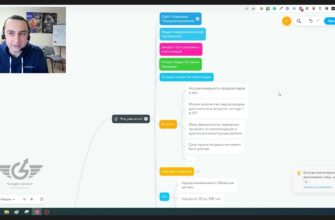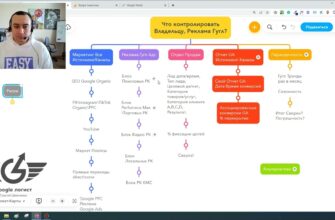- What is Smart Bidding?
- How does automatic bidding work?
- The Benefits of Smart Strategies in Google Ads
- Types of smart bidding strategies
- Max Conversions
- Target CPA
- Maximum Conversion Value
- Target ROAS
- CPA Optimizer
- Max clicks
- Ad target position
- When doesn’t auto-bidding work?
- Popular mistakes when using Smart Bidding
There are two types of marketers: those who rely on intelligent bidding and those who rely on their own resources. Why, with such wide possibilities of automated bid management, do many specialists still continue to assign them manually? In what areas of activity is Smart bidding applicable? Let’s try to understand and answer these questions in this article.
What is Smart Bidding?
Smart bidding in Google Ads is a set of different strategies by which an advertiser gives permission to bid to Google’s algorithms.
The technology of these algorithms is based on the principle of machine learning. The system independently determines the optimal cost per click, with which it is more profitable to enter the auction in a given situation.
How many calls and sales will I get by ordering contextual advertising from you?
I need to calculate the conversion of my website Describe
the task
in the application
Calculate potential ad revenue Google
contextual advertising calculator
In order to achieve goals within the set budget, the service takes into account all kinds of criteria that determine the context of the request entered by the user: device, time, place, language settings, operating system, presence in remarketing lists.
Important! Intelligent bid management saves marketers time, allowing them to focus on strategic tasks instead of doing typical routine work.
The tool helps to optimize advertising campaigns and achieve maximum efficiency. In any case, you will have to control it, because automation cannot always set priorities correctly, but labor costs will be much lower than with manual settings.
How does automatic bidding work?
The principles of operation of manual and automated bid management are different. If auto-bidding is used, then the algorithm determines the cost of a click on its own, taking into account goals, a given budget, attribution models, etc.
The contextologist determines the manual bidding strategy based on his own logic and priorities. This method allows you to set different bids for any keyword or ad group. The main disadvantage is that it takes a lot of time to optimize the AC.
In an automated approach, several criteria are used for more precise control, which can be grouped into two broad categories:
- Criteria for manual adjustment: presence in remarketing lists, time, place, device. For example, increase the cost per click for users of mobile devices, reduce it for those who are in Lviv, etc.
- Criteria intended for automated mode only: language settings, operating system and browser type, applications, search queries, advertisements. They are not available for manual control.
The Benefits of Smart Strategies in Google Ads
The main advantage of smart bidding strategies in Google Ads is to generate more leads without additional funding while saving labor costs.
The system analyzes the criteria not for a single campaign, but for the entire Google AdWords account. That is why auto-bidding performs well even where there are almost no conversions. There are other advantages of this tool:
- Managing bids during an auction. The algorithm calculates the conversion probability and, taking it into account, calculates the cost per click. If the target action in this particular case is unlikely, then AdWords will not allow the ad to participate in the auction.
- Analysis of user requests. The mechanism determines the intentions and interests of the user, analyzes the key phrases he entered earlier in the search. The system gives priority to those requests that are more likely to receive a conversion.
- Cross analysis of several parameters that characterize the behavior of the audience. In automatic mode, the bid amount is determined by numerous contextual criteria: device, place, intent associated with it, time and day of the week, browser.
- A payment option on the display network for each targeted interaction, not a click through. This allows you not to pay for users who have not made a purchase.
Help! If smart management works in several campaigns at once, then its effectiveness increases. This is due to the aggregation of a larger array of statistical information about users and their actions on the site. The analytics of large ads can be used to determine the cost of a transition in small ads, which has a positive effect on the management of the latter.
Types of smart bidding strategies
Let’s look at several types of smart bidding strategies:
Max Conversions
Ensuring the maximum number of conversions within the given daily limits. Google Ads determines the optimal click-through rate by analyzing statistical data and contextual criteria.
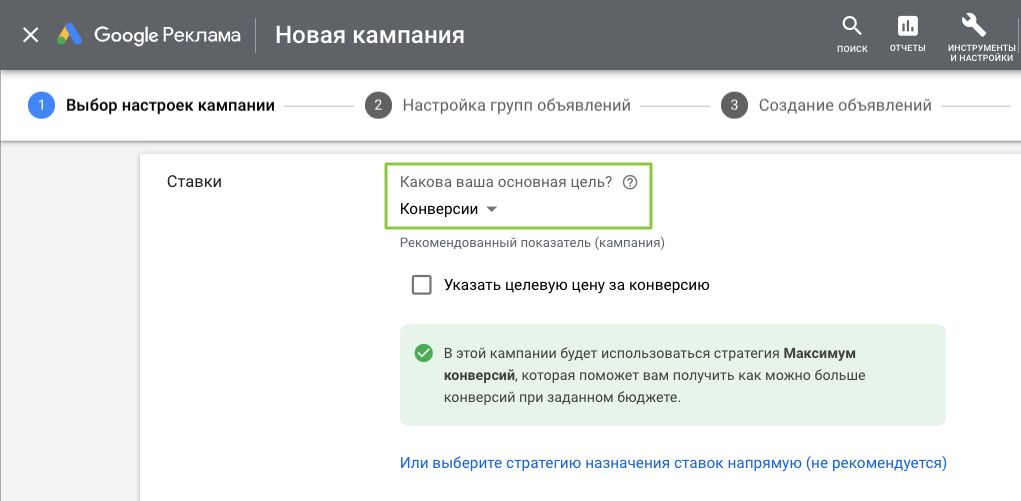
Usually used when:
- cannot achieve the required level of conversion value and conversion volume;
- There is no specific target for the cost of user interaction with the page.
Advice! When using this strategy, always set limits on the budget, because it is completely spent.
Target CPA
It is used when you need to get the maximum conversions, while keeping their cost at a given level.
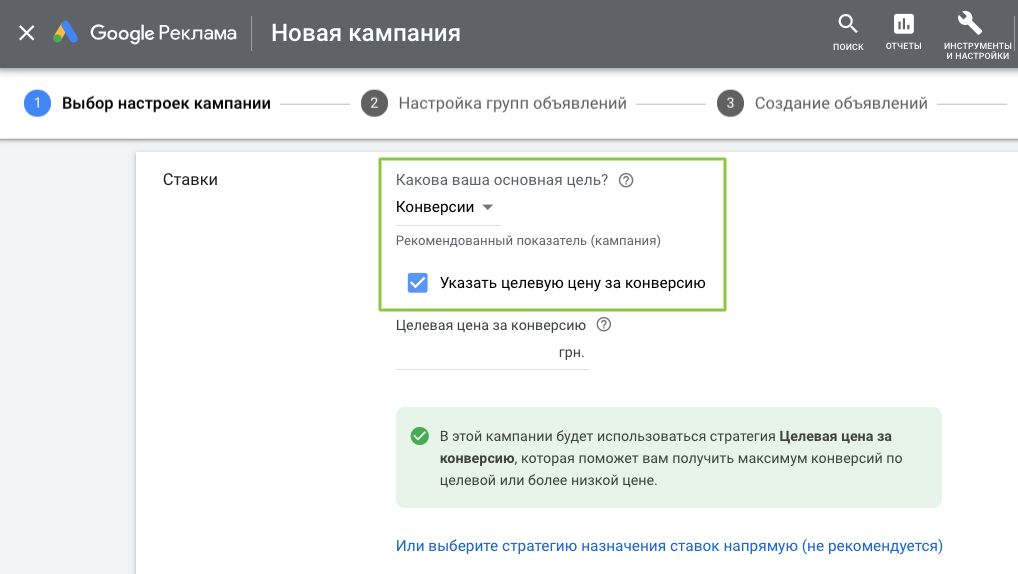
Used in the following conditions:
- cannot achieve the required level of conversion value and conversion volume;
- Specific target for interaction cost defined.
The strategy performs well for campaigns where there are no budget constraints. At the same time, its size should be at least 5-10 times higher than the set cost per conversion.
How many calls and sales will I get by ordering contextual advertising from you?
I need to calculate the conversion of my website Describe
the task
in the application
Calculate potential ad revenue Google
contextual advertising calculator
Maximum Conversion Value
Gives you the highest conversion value within your budget.

When connecting this strategy, you need to track the conversion values and their volume. There is no minimum bar, but the training of the algorithm will be faster if the AC generates at least 15 targeted actions per month.
Should be used if:
- the required level of conversion value and conversion volume has been reached;
- There is no specific target for return on investment in advertising.
When using a strategy, you should set budget limits, because it is always fully spent.
Target ROAS
As part of this strategy, the desired return on advertising investment (ROAS) is fixed. The goal of the system is to provide conversions with maximum value in such conditions.
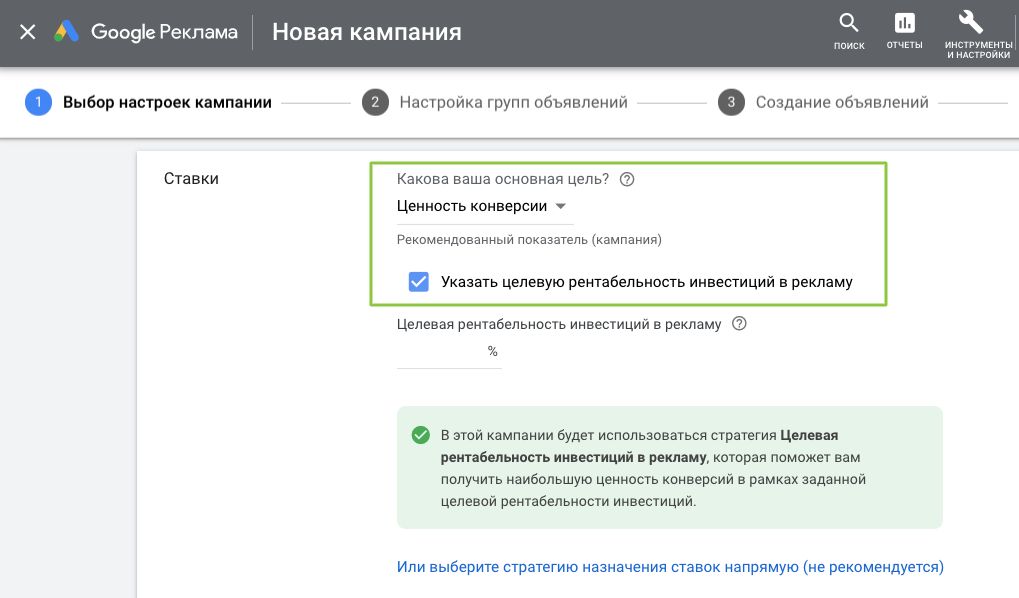
Advice! Use this strategy if you are looking to increase purchases without lowering your established ROAS, or if you plan to increase your ROAS.
Use appropriate if:
- the required level of conversion value and conversion volume has been reached;
- A specific goal has been set for the return on investment in advertising.
Should only be used for campaigns that don’t have budget limits.
CPA Optimizer
This semi-automated strategy is used to adjust manual bids. Its efficiency, as a rule, is lower than that of strategies operating in a fully automatic mode. But it is needed in cases where the advertiser wants to independently set the cost per click for their contextual ads.
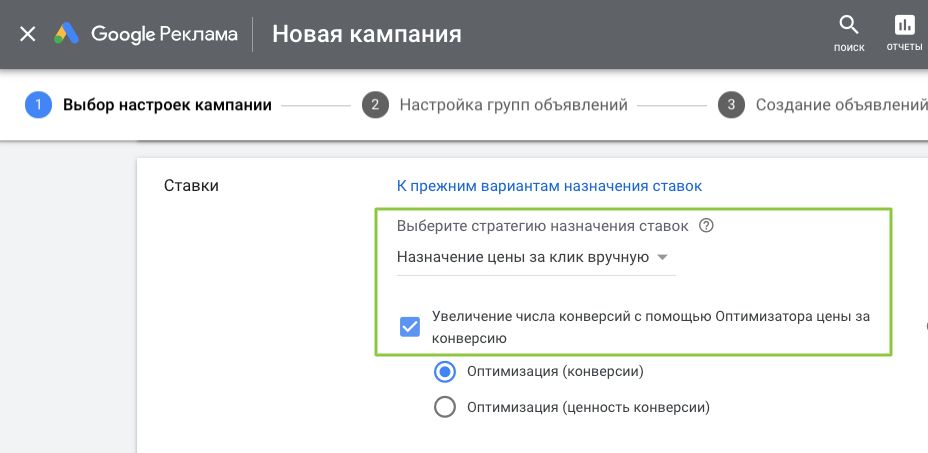
Max clicks
As the name implies, the strategy is aimed at getting the maximum possible number of clicks to the site within a certain financial limit.
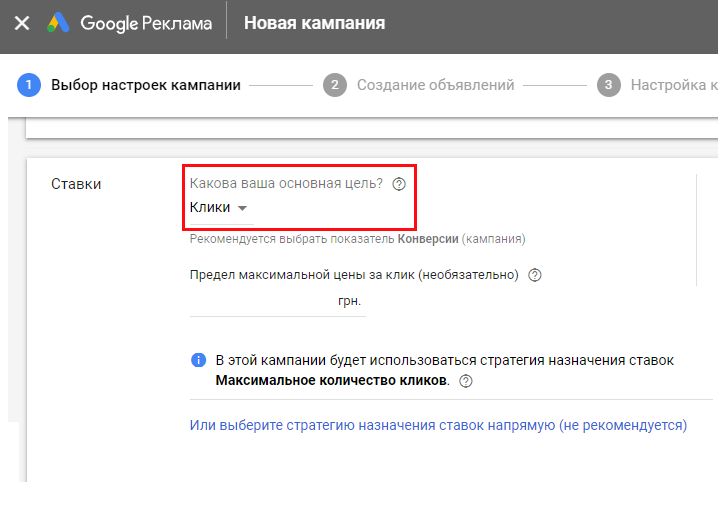
Important! When choosing this option, do not forget that not all transitions are converted.
Works well when you have a large budget to perform any task related to increasing search coverage. For example, when high-converting keywords in your competitive niche can be attributed more to low-frequency ones. In this situation, the daily limit simply does not have time to be used up.
Ad target position
Used when you want to keep your ad consistently on the first page of a search engine. The algorithm automatically increases or decreases the cost per click according to the auction situation.
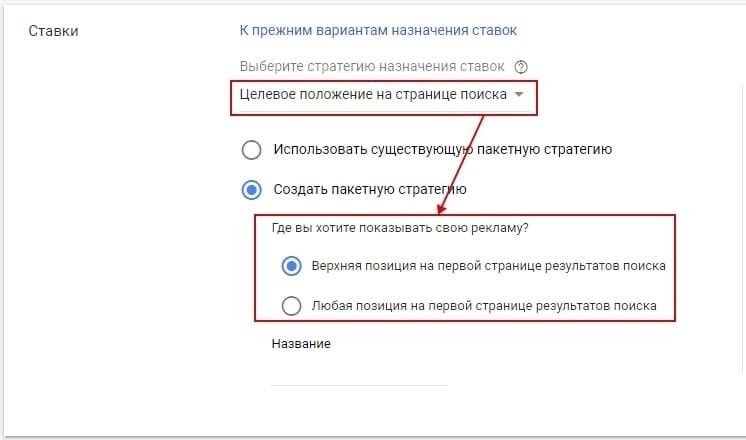
Advice! No one can guarantee that an ad will get to the first positions in 100% of cases. Therefore, we recommend that you opt for other strategies.
When doesn’t auto-bidding work?
Despite numerous advantages, automatic bidding does not always work effectively. Let’s consider situations when it is inappropriate to use it:
- No accumulated statistics for an account, campaign, or product. For the algorithm to work correctly, it will take at least two weeks to collect data for analysis.
- Scarce traffic. It is not possible to calculate the best option for changing rates without a sufficient amount of statistical data.
- Conversions are not being registered or are not being registered correctly. Under such conditions, it is impossible to talk about the effective operation of the strategy.
Attention! If you work in a narrow niche in the regional market, do not rush to switch to automated mode. At the initial stage, you can make a conclusion about whether you need advertising at all only if you manage the AC manually for at least 2-4 weeks.
Popular mistakes when using Smart Bidding
- Using overly implausible cost per conversion or ROI targets. It is best to set the recommended parameter values. The established rate for the interaction should not fall below the average for the last month.
- Testing the attribution model without being tied to a strategy. This method does not guarantee the purity of the experiment.
- Regular adjustments to campaign settings in case of an insufficient test period. The algorithm is trained up to two weeks, and the net period of work cannot be less than this period of time. During testing, any global changes in bids and budget have an extremely negative impact on the overall performance of Smart Bidding.
- Analytics too hasty and use of inappropriate metrics. The actual values of indicators should be compared with similar ones in previous periods or with targets. Remember that conversions appear a little later than clicks. Also, do not evaluate the number and cost of clicks on ads if conversions have been tested.
- Insufficient funding. For strategies related to target CPA or ROI, don’t limit your budget. You should also not set the cost to 1000 hryvnias and at the same time allocate only 2000 hryvnia for the campaign.
- Striving for a high share of impressions. Auto-bidding is aimed at performing tasks related to conversions, so it is not practical to increase the percentage of impressions using it.






